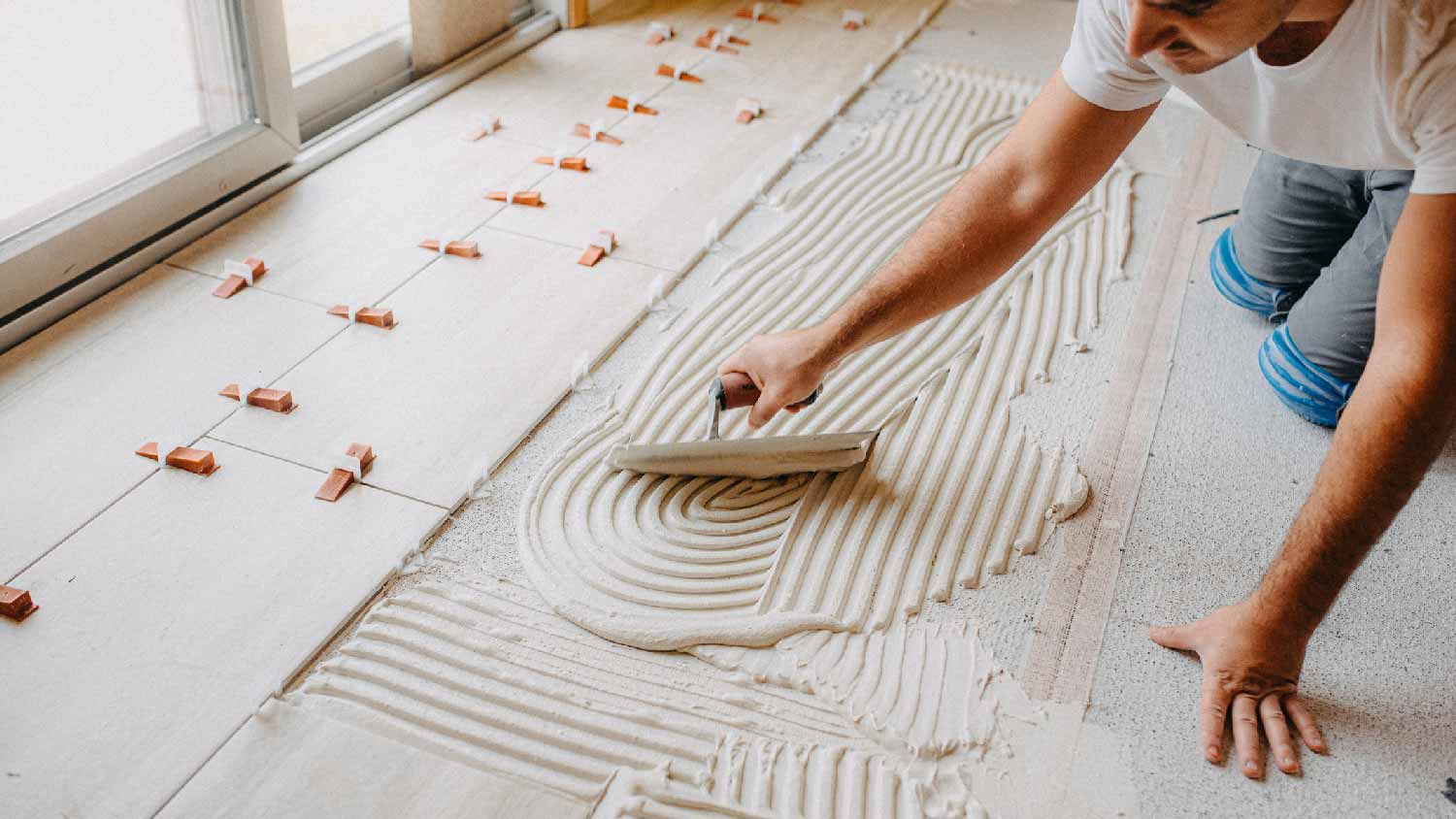
You're planning a bathroom remodel, but how much will it cost to retile your bathroom? Read this guide to find out.
Make a splash with clean lines and a smooth finish


When it comes to home improvement projects, tiling a shower can be both a rewarding and challenging endeavor. Learning how to tile a shower will help you enhance the aesthetic appeal of your bathroom and add value to your home. Let’s walk through each step, ensuring you have the confidence and knowledge to tackle your bathroom renovation and save big on the cost of tiling your shower.
All successful tiling projects start with detailed prep work. Begin by removing any existing tile or shower materials and protect the surrounding area with painter's tape and plastic sheeting to prevent damage and stop debris from flying everywhere.
Then, ensure the surface where you'll be tiling is clean, dry, and free of any debris. This will help the tiles adhere properly. If your shower doesn't already have a liner, install one to prevent water damage. Then, grab your tiling tools and get ready to transform your shower.
Tiling a shower involves many detailed steps. Follow this guide to ensure a professional, smooth, and waterproof shower finish.
Begin by measuring the area where the cement board will be installed. Accurate measurements are essential to ensure a precise fit. If you’re not sure how to read a tape measure, you should probably hire a professional for this project.
Using your measurements and a utility knife, cut the cement board to size. Secure it to the shower studs using cement board screws, ensuring it is flush and level.
Apply a bead of silicone caulk to any gaps between the cement boards. This step is crucial to prevent water from seeping through.
Brush or roll a waterproofing membrane over the cement board. This additional layer of protection will prevent moisture from penetrating the walls and causing mold growth or other water damage.
Mix the thin-set mortar according to the manufacturer's instructions. Apply it to the shower pan with a notched trowel, then lay the tiles in place, pressing firmly to ensure a good bond.

Mark the center points on each shower wall to guide your tile placement. This will help you evenly distribute and align the tiles.

Spread a layer of mortar on the wall using a notched trowel, starting at the center point and working outwards.

Begin by installing the first row of tiles along the bottom of the wall, starting at the center and working your way out to each corner. Use tile spacers to maintain even spacing, and wipe away any excess mortar with a damp sponge.
Continue tiling above the first row, ensuring each tile is level and evenly spaced.

Use a tile cutter or wet saw to cut tiles to fit around the edges of the shower as well as the shower fixtures. Be mindful of any shower features you plan to add, such as a shower seat or a tile shower niche. Measure carefully to ensure a precise fit.
After the mortar has cured for 24 hours, remove the tile spacers and clean any remaining mortar from the tile surfaces with a damp sponge.

Mix the epoxy grout according to the manufacturer's instructions and apply it to the gaps between the tiles using a rubber grout float. Wipe away as much excess grout as possible with a damp sponge when you’re done, and allow it to cure for 24 hours.

Once the grout has cured, use a clean, dry cloth and a grout haze remover product to get rid of any grout haze on the surface of your new tile shower.
To protect your shower, apply a tile and grout sealer going from left to right. Wipe any excess sealer with a dry cloth, and then let the sealer settle. Sealing will help prevent stains and moisture damage.
Tiling a shower is a labor-intensive project that requires precision and patience. You can save money and gain a sense of accomplishment by DIYing, but this job demands a certain level of skill and attention to detail for magazine-worthy results. If you're not confident in your abilities or lack the necessary tools, hiring a local tile contractor is the best option. Professionals have the expertise to ensure the job is done correctly and efficiently, saving you time and potential frustration.
From average costs to expert advice, get all the answers you need to get your job done.

You're planning a bathroom remodel, but how much will it cost to retile your bathroom? Read this guide to find out.

The cost to install travertine tile depends on materials and the size of the project. This guide to travertine tile cost will help you budget accordingly.
.jpg?impolicy=leadImage)
Sealing your grout goes a long way toward extending its life span. This guide breaks down the cost factors for sealing grout, including size, materials, and labor.

Discover the many differences between sanded vs. unsanded grout so you can choose the right type for your next tiling project.

Calculating how much thinset you need involves multiple steps. Use this guide to determine exactly how much of the bonding material you’ll need.

From mosaic tiles to planks, tiles come in a huge range of sizes. Not sure which one you need for your project? Let’s review the most common tile sizes.